Ananthapura
This is the only lake temple in Kerala.
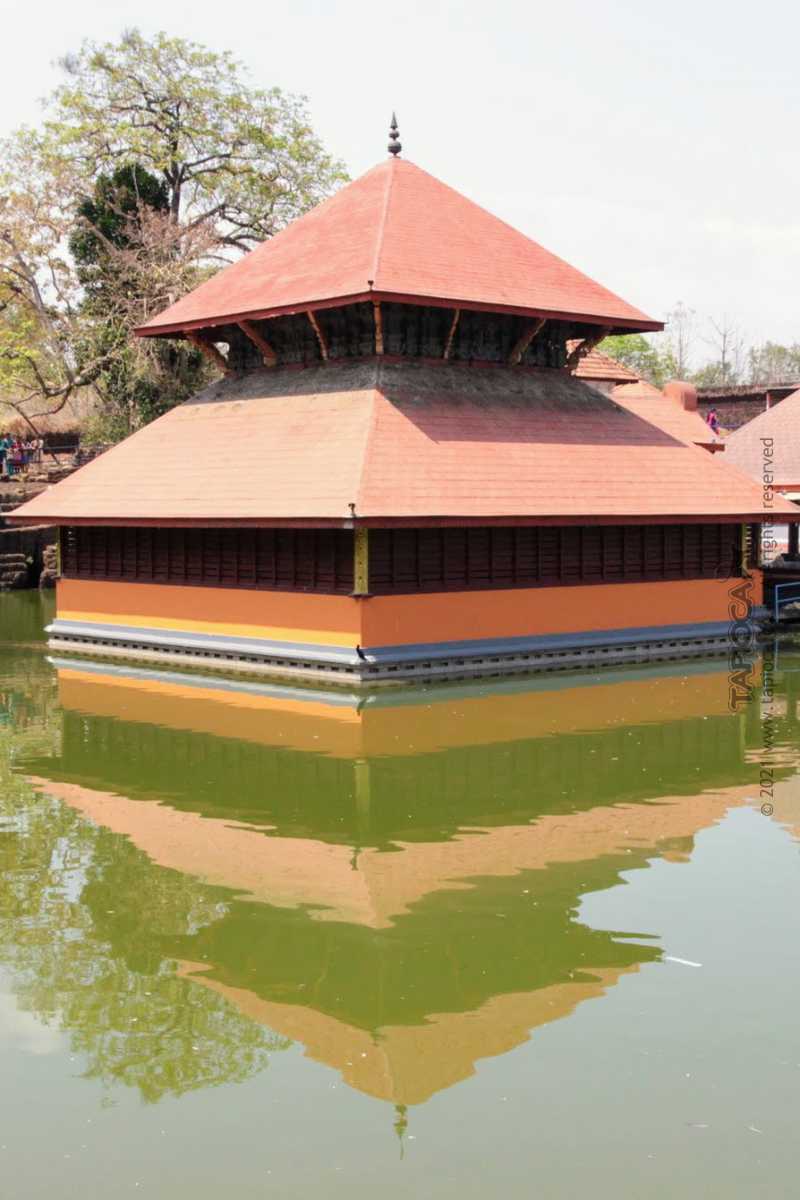
Ananthapura Temple
Ananthapura Temple near Bekal in Kerala is unlike any other temples you'll find in this region. The whole temple is built like an island in the middle of a rectangular pond. Dedicated to Lord Vishnu, this is the only lake temple in Kerala.
T
he temple is located atop an enigmatic looking laterite hilltop. You'll see nothing other than the rusty brown expanse in this arid landscape as you approach the temple vicinity by the approach road. The temple appears in a stark contrast in middle of a 2 acre rectangular pond, atop this hill.According to local legend, this temple is supposed to be the original adobe (called 'moolasthanam') of Lord Vishnu enshrined in the Padmanabha Swamy Temple of Thiruvananthapuram.
This 9th century temple is a living temple with active worship. A causeway like pavilion gives access to the main shrine in the center. The natural deep pond scooped out of a recess laterite hill slope.
The idol here was originally made of a unique mixture of more than 70 medicinal materials called ‘Kadu-Sharkara-Yogam. This was replaced with the five metal composition (Panchaloha metals) in 1972. According to the local folks, there are plans to make the idol again with the original composition.
Towards the southwest, of the pond with its porch opening to the pond is the shrine of Goshale Krishna. There are also few shrines around the pond.
Around the northeast corner of the pond, you can see the entrance to a tunnel. According to local belief, this tunnel connects to the Ananthapadmanabha Temple (Padmanabhaswamy Temple) in Thiruvananthapuram, some 500km+ south of Ananthapura.
Babiya, the divine crocodile
What is quite unusual about the Ananthapura temple is the friendly crocodile called Babiya. This crocodile lives in the pond surrounding the temple. Though the pond of fishes, Babiya is vegetarian! A special gruel made of rice and jaggery. Every day the temple priest feeds Babiya after the noon prayers.
What's astonishing is no one knows when and how this single crocodile made it into the pond. It's presence is as old as the legend of the temple. According to the local folklore, in 1945 a british officer shot and killed a crocodile in the pond. Miraculously a new crocodile appeared in the pond a few days later. Still more, the officer died of snakebite a week later.
Around 12 o'clock in the noon, after the temple pooja, visitors crowds around the corner of the pond to see Babiya getting feed.Possibly this is the only time you can be sure to get a glimpse of this legendary creature.Join the crowd!
Ananthapura Temple Timings
Morning 5.30am - 12.30pm
Evening 5.30pm - 7.30pm
If you planing to offer prayers, be there before 12 in the noon or 7 in the evening.
The dining hall attached to the temple serves a simple noon meals everyday to the visitors. It's free though a small donation to serve the community meal is appreciated. Ask for the dining hall direction, it's around the corner of the temple compound.
How to reach Ananthapura Temple
Ananthapura is about 5km east of a small town called Kumbla, on the NH66 NH17 ( erstwhile NH17 ). Take this route if you are driving on the NH66. Drive towards Seethangoli on the Kumbla-Badiyaduka road. You'll notice a diversion signpost just before Seethangoli junction.
If you are looking for public transport, there are frequent local bus services on the Kumbala-Badiyadukka route. Ask for the Ananthapura stop. It's about 1km walk from the bus stop on the Kumbla-Badiadka road.
Alternatively, take a bus to Seethangoli and hire an autorickshaw (3km).
Madhur Temple is 7km south of Ananthapura. On the way you'll pass the Maipady Palace, the seat of erstwhile Kumbala kings.
Kasargod is 15km south of Ananthapura. The resort town of Bekal is further 10km south of Kasargod.
Tailpiece : Is Ananthapura the only lake temple in Kerala? Are there no temples/shrines in kerala built in a waterbody?
Not very true. There is a Durga shrine in Thrissilery Shiva Temple in Wayanad. This tiny shrine is surrounded by a rectangular waterbody. A perennially flowing natural stream fills this pond. Yes, the shrine and the pond in Thrissilery is of a tiny scale compared to the Ananthapura temple.
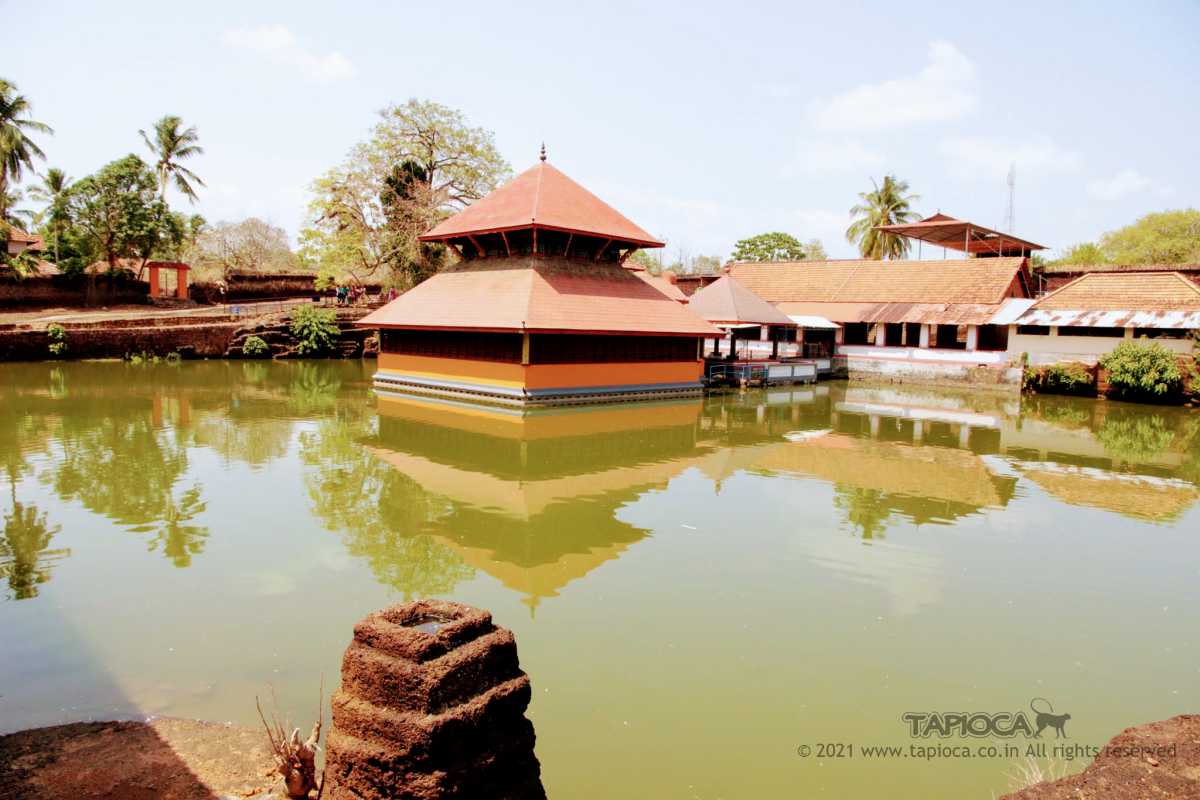
Shrine of Ananthapura surrounded by the natural lake
Note the copper clad 2 level roof design. In the foreground is the in situ carved 'balikal'. Such features are not built, but sculpted out of the living laterite on the ground.
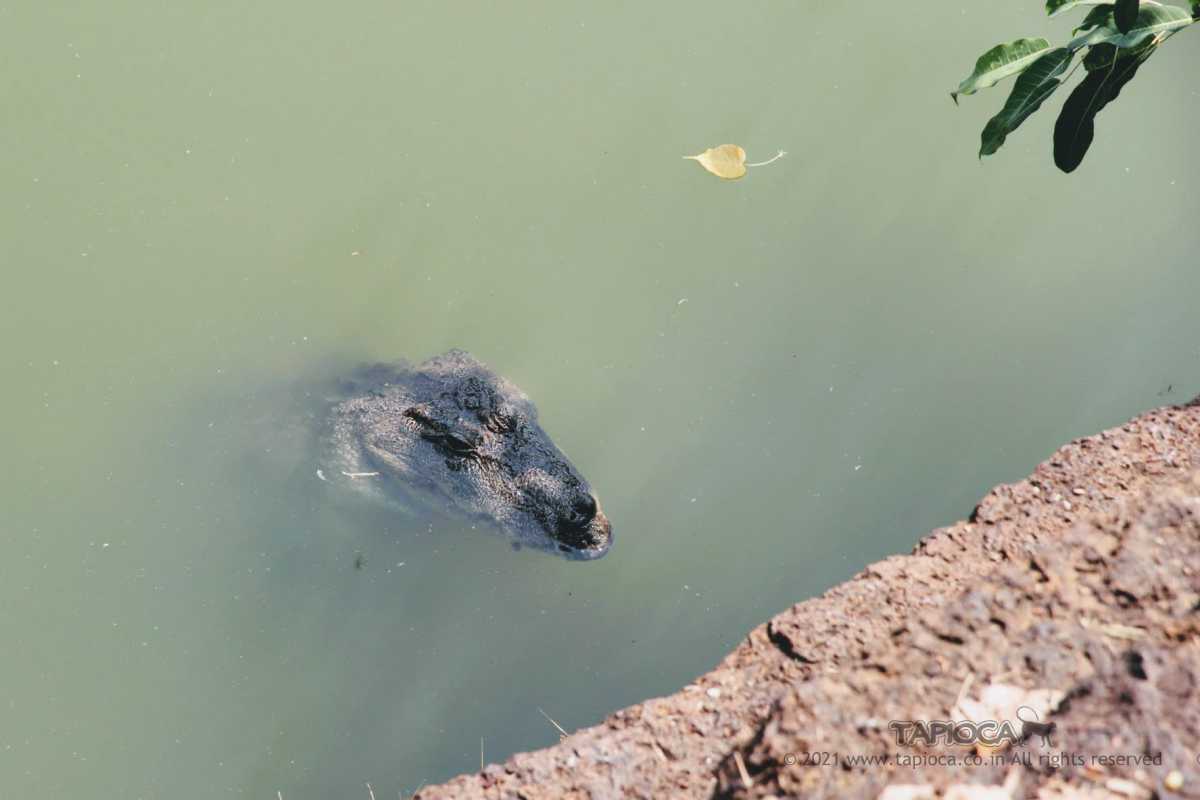
Ananthapura Temple
The crocodile surfaces during the feeding time (8am & 12noon). The priest feeds Babiya with a special meals made of rice and jaggery.

The main temple with connecting bridge.
Seen in the background is the Gopalakrishna Temple
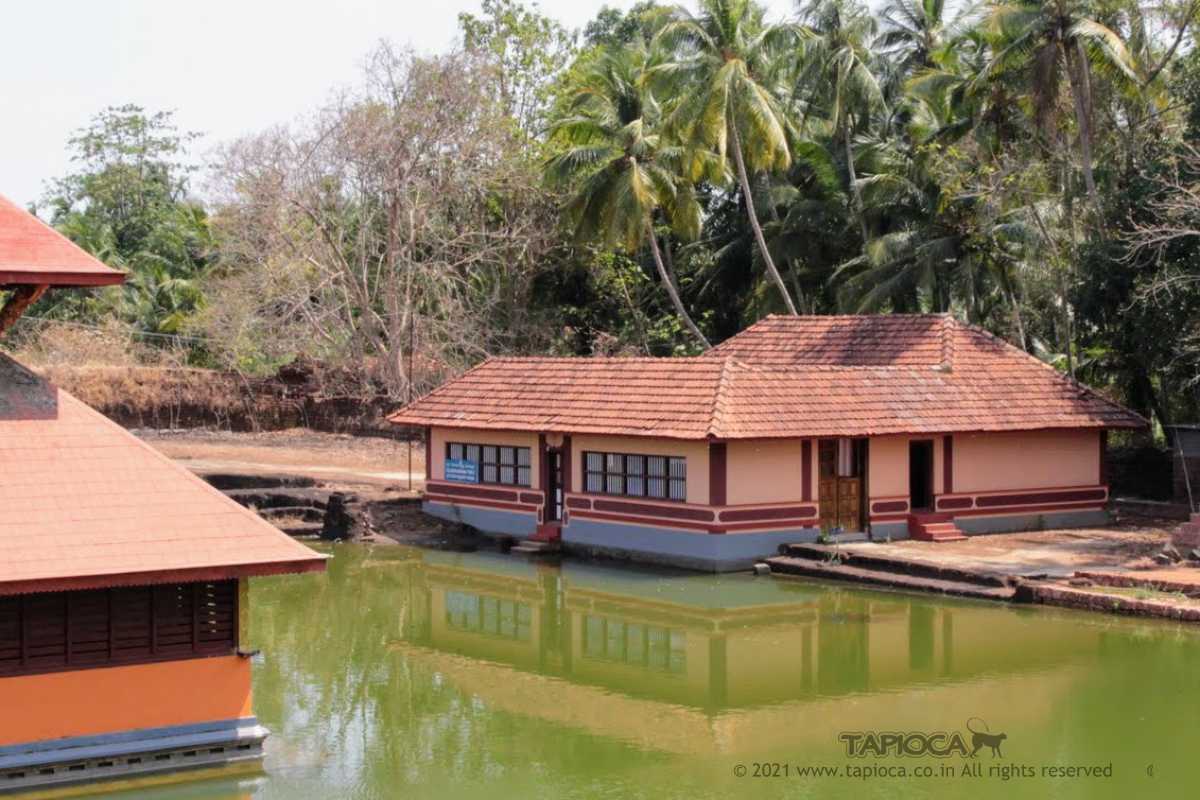
Goshala Krishna Temple
This temple is located on the southwest corner of the temple pond in Ananthapura.
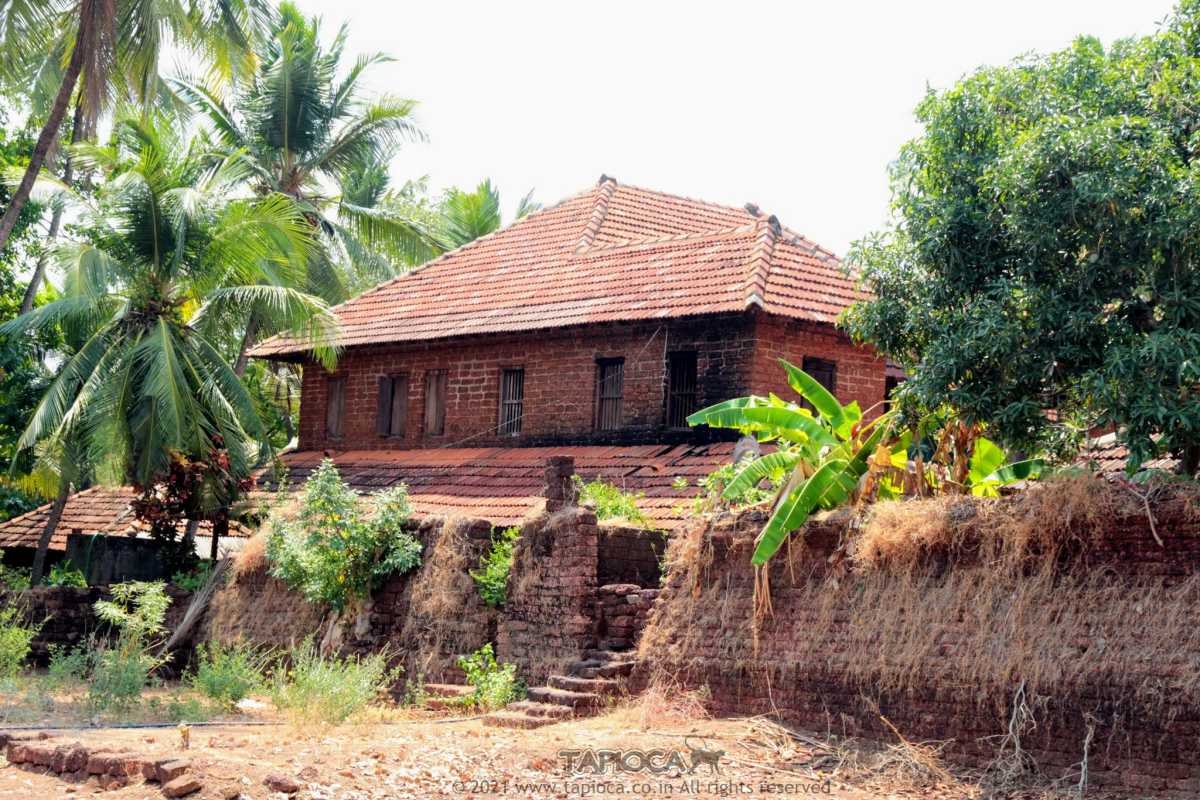
Ananthapura
The traditional houses made of Laterite blocks and terracotta tiled roof.
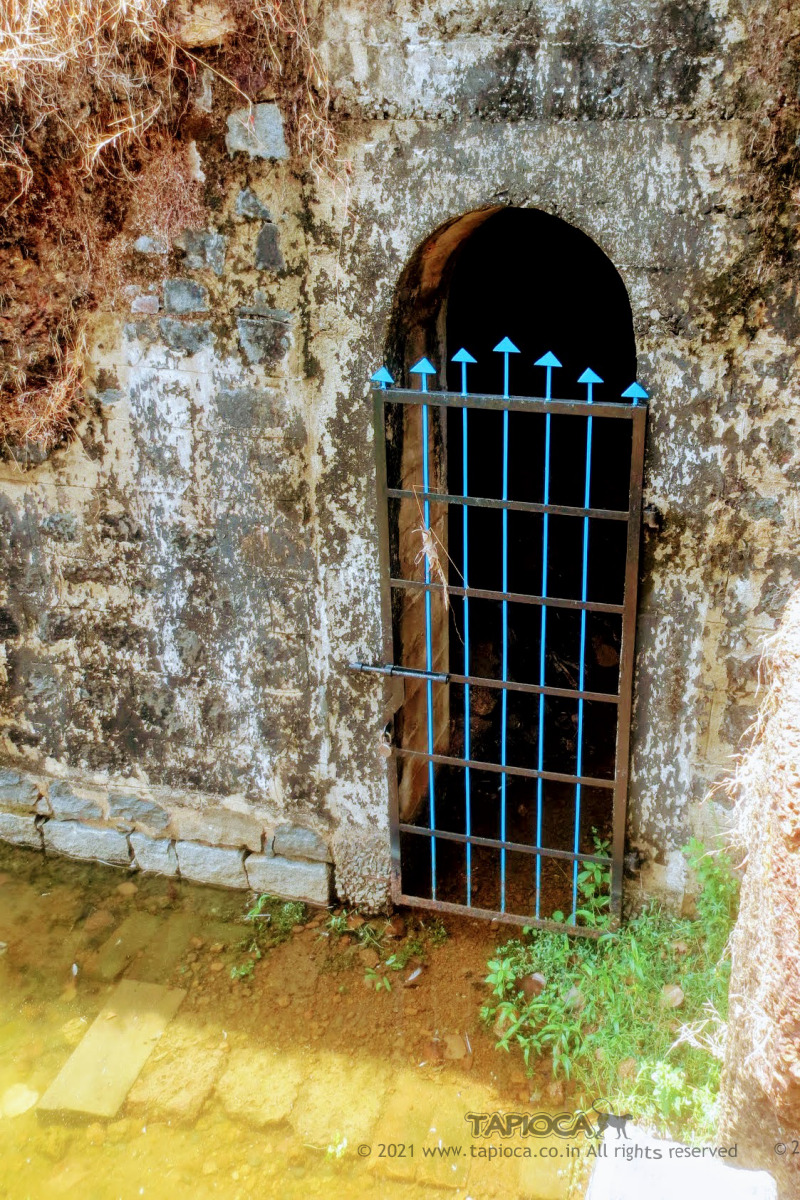
Located in Kasaragod
According to local belief, a tunnel from Ananthapura Temple connects Padmanabhaswamy Temple of Thiruvananthapuram with the Ananthapura.
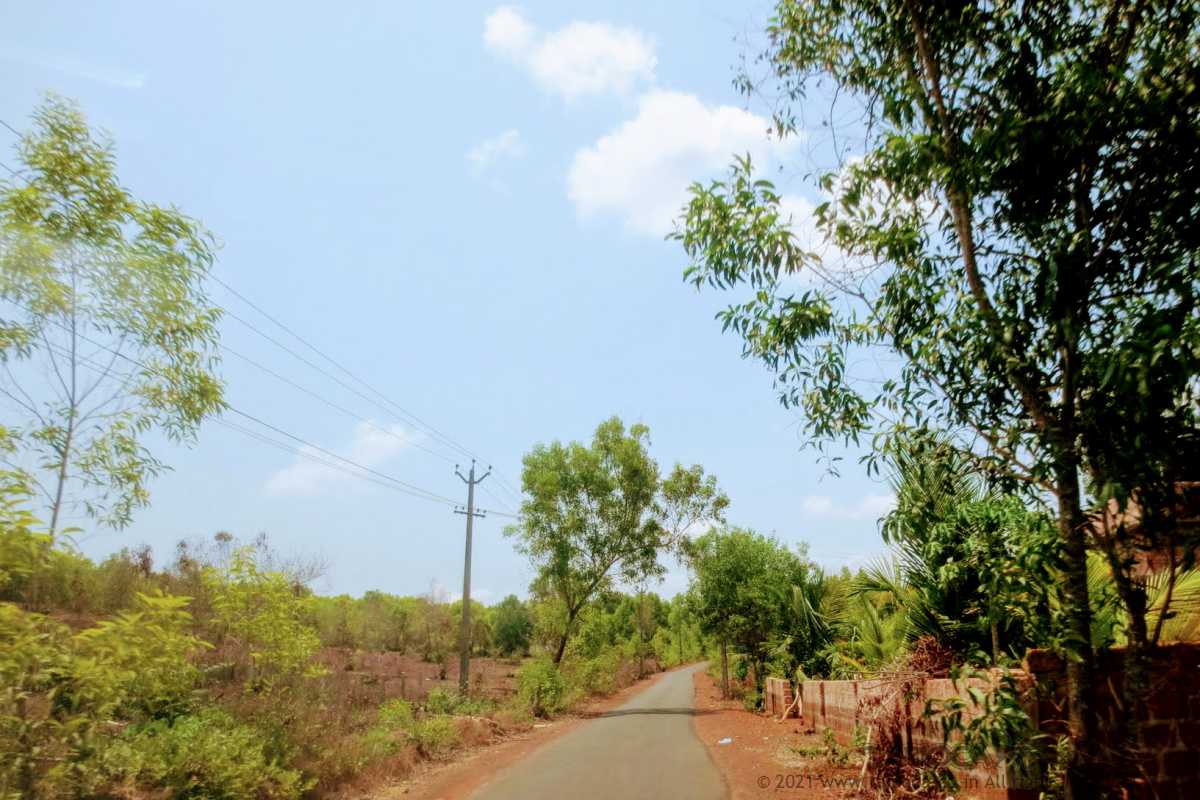
Kasargod
Seethangoli to Ananthapura road
